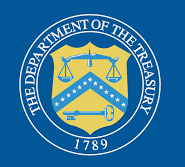
In August of 2022, The Inflation Reduction Act was signed into law which made significant changes to the Energy Policy Act (EPAct) Section 179D tax deduction. The benefits and expansion of eligibility for energy-efficient commercial buildings were now enhanced, opening the door for companies who made energy-efficient upgrades to their commercial buildings.
Increased Deductions for Prevailing Wage and Apprenticeship Requirements
- The original deduction of $1.88/sqft has increased to $2.50 – $5.00/sqft for buildings that meet the prevailing wage and apprenticeship requirements.
- The deduction reduces to $0.50 – $1.00/sqft for 25% – 50% energy savings if the prevailing wage and apprenticeship requirements are unmet.
- Projects with a construction start date prior to 1/29/2023, are eligible for the $2.50 – $5.00/sqft deduction without meeting the prevailing wage and apprenticeship requirements.
Broader Eligibility
-
- If the energy-efficient property is owned by a federal, state, or local government, or a non-profit, the property owner may allocate the §179D deduction to the primary designer of the building.
For the first time. designer allocation is now open to all tax-exempt entities including Indian Tribal Governments, private colleges, and universities.






















Recent Comments